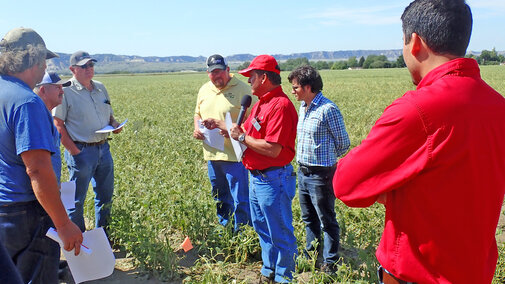Results of the 2019 variety trials for dry edible beans are now available in CropWatch. The trials were conducted by the University of Nebraska Panhandle Research and Extension Center in Scottsbluff.
Results for the past three years are listed on that web page. Older variety trial results also are available. The variety trials have been conducted for 38 years as a service to the dry bean industry.
The 2019 dry bean variety trials were planted at two locations: the Scottsbluff Ag Lab at the Panhandle Research and Extension Center and the Mitchell Ag Lab, 5 miles to the north. Six trials were planted at both locations: Great Northern (25 entries), pinto (50 entries), light red kidney (19 entries), dark red kidney (9), black beans (18), and navy (8). An additional yellow trial (3 entries) was planted at the Scottsbluff Ag Lab and the Cooperative Dry Bean Nursery was planted at the Scottsbluff Ag Lab.
The trials at the Scottsbluff Ag Lab were not harvested because of severe hail storms on Aug. 15, 16, and 20. All the results reported this year are from the Mitchell Ag Lab.
Results were compiled by Carlos Urrea, dry bean breeding specialist, and Eduardo Valentin Cruzado, research technologist for the dry bean breeding program. They also acknowledged Panhandle Center Farm Manager Gene Kizzire and his team and the summer crew for help with agronomic management, and Ann Koehler for editing the document. The financial support of the Dry Bean Commission is greatly appreciated.
The dry bean report includes a description of the trials and several tables that list yield, moisture, test weight, and other data for each variety within the market classes. The description includes detailed information, such as planting dates, seeding rates, herbicide treatments, row width, irrigation, harvest date, and other details.
In addition to the website, the report will be published in the Bean Bag newsletter published by the Nebraska Dry Bean Growers Association.

